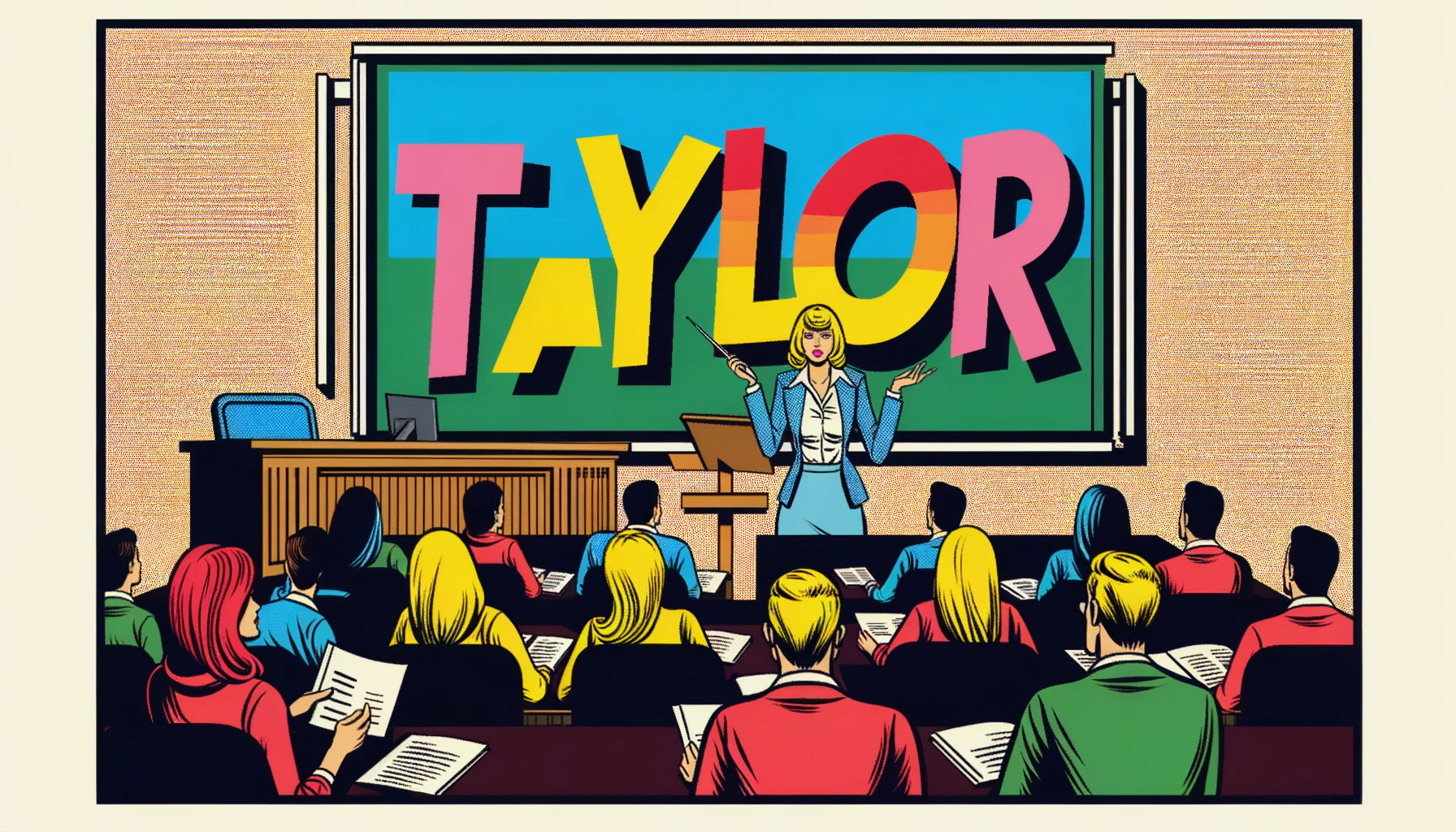In the ongoing discourse surrounding the integration of Taylor Swift’s music into academic curricula, a nuanced understanding of contemporary art’s educational potential emerges. Contrary to traditionalist sentiments that may dismiss Taylor Swift’s work as mere pop culture ephemera, a closer examination reveals profound literary depth and cultural relevance embedded within her songwriting.
Taylor Swift – an artist often relegated to the confines of pop music – asserts her identity as a poet, a distinction echoed throughout her lyricism. Tracks like “Sweet Nothing,” featured on her album “Midnights,” transcend the limitations of genre, offering narratives and imagery reminiscent of poetry. Dismissing her contributions based solely on genre overlooks the complexities of her storytelling and the resonance of her thematic explorations.
Beyond her artistic endeavors, Taylor Swift’s commitment to literacy and education underscores the intrinsic value of her work in academic settings. Through philanthropic initiatives such as book donations to public libraries and advocacy for reading and songwriting, Taylor Swift actively promotes intellectual engagement and creative expression. Incorporating her music into educational contexts not only broadens students’ cultural horizons but also fosters critical thinking and literary appreciation.
Taylor Swift’s songs serve as ground for literary analysis, offering students opportunities to explore themes, symbolism, and narrative structures. From her masterful use of metaphor to her adept handling of complex emotions, Taylor Swift’s lyrics invite scholarly inquiry and interpretation. By juxtaposing her work with canonical texts like Shakespeare’s sonnets, educators can illuminate the interconnectedness of historical and contemporary storytelling traditions, enriching students’ understanding of literary evolution.
Embracing Taylor Swift’s literary merit in educational settings represents a forward-thinking approach to curriculum development. By recognising the depth and relevance of contemporary art forms, educators can cultivate inclusive learning environments that resonate with students’ lived experiences. In this digital age, where cultural boundaries are fluid and artistic expression knows no bounds, integrating Taylor Swift’s music into the academic discourse is not only prudent but essential for fostering a holistic understanding of literature and culture in the 21st century.
Expanding the canon of music artists incorporated into academic curricula offers educators a rich backlog of contemporary voices to engage students in critical discourse and cultural exploration. Beyond Taylor Swift, several other artists demonstrate the depth and literary merit worthy of academic study:
Bob Dylan: Widely regarded as one of the most influential songwriters of the 20th century, Bob Dylan’s poetic lyricism and social commentary have earned him a Nobel Prize in Literature. His songs, such as “Blowin’ in the Wind” and “The Times They Are a-Changin‘,” serve as reflections on the socio-political landscape of their time, making them ripe for literary analysis and historical contextualisation.
Joni Mitchell: Renowned for her poetic sensibility and musical innovation, Joni Mitchell’s songwriting dives into themes of love, identity, and social consciousness. Songs like “Both Sides, Now” and “A Case of You” showcase Joni’s gift for lyrical storytelling and emotional depth, offering students rich material for thematic exploration.
Kendrick Lamar: As one of the most acclaimed hip-hop artists of his generation, Kendrick Lamar’s albums, such as “To Pimp a Butterfly” and “good kid, m.A.A.d city,” are celebrated for their lyrical complexity and socio-political commentary. Kendrick’s intricate wordplay, vivid storytelling, and exploration of African-American identity make his music ripe for academic study in the context of contemporary poetry and social justice.
Patti Smith: Often hailed as the “punk poet laureate,” Patti’s music blends rock and poetry to create a powerful and visceral artistic experience. Songs like “Gloria” and “Because the Night” showcase Patti’s raw energy and unapologetic lyricism, making her a compelling figure for scholarly examination in courses on literature, music, and cultural studies.
Incorporating these diverse artists into academic curricula expands students’ cultural literacy and fosters a deeper appreciation for the intersections of music, literature, and society. By engaging with a broad spectrum of musical voices – not just from Taylor Swift – educators can cultivate critical thinking skills and encourage students to explore the complexities of the human experience through the lens of contemporary artistry.












